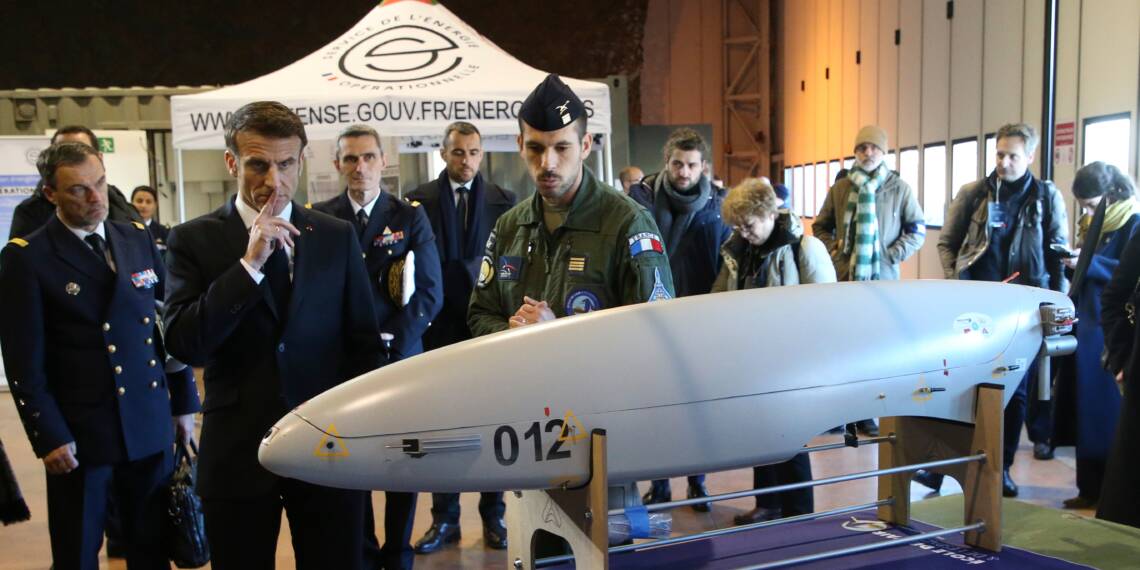In an increasingly multipolar world, military alliances and defense capabilities are being recalibrated across continents. One of the most intriguing developments comes from within the West itself, where France—long a vocal advocate for European strategic autonomy—is subtly but steadily positioning itself as a counterbalance to the U.S. military-industrial dominance. From taking on the US in the Arctic, to countering Washington in the defence market.
Recent events, including the ongoing fighter jet rivalry between the American F-35 and the French Rafale, and France’s new push to market alternatives to U.S.-made Patriot air defense systems, suggest that Paris may be carving out a distinct defense leadership role within NATO and beyond.
France challenging US military complex
The Dassault Rafale, France’s flagship multirole fighter, has been winning export deals in countries like India, Egypt, and the UAE—nations that could have chosen the F-35 but didn’t. French President Emmanuel Macron has championed the Rafale as a symbol of European defense sovereignty and an alternative to American military dependence.
However, while the Rafale is lauded for its versatility, lower operational costs, and export flexibility, it is still a 4.5-generation fighter. The F-35, by contrast, is a stealthy fifth-generation jet with advanced sensor fusion and battlefield networking capabilities. NATO’s deeper integration often leans toward F-35 adoption for interoperability—something the Rafale lacks.
Yet the Rafale’s success signals that not all allies want to be locked into U.S.-centered defense ecosystems.
In 2025, France’s Thales and MBDA have ramped up marketing for their SAMP/T NG (New Generation) surface-to-air missile system—a direct competitor to the U.S. Raytheon-built Patriot. The French-Italian SAMP/T NG, based on the Aster missile family, boasts impressive 360-degree coverage, rapid deployment capabilities, and compatibility with NATO C2 systems.
France has already secured interest from countries like Saudi Arabia and Greece, and is positioning the system as a more modern, European alternative to the decades-old Patriot. While the Patriot remains a battle-proven platform, it is also heavily tied to U.S. political strings and logistical infrastructure. France is betting on flexibility, speed, and independence as key selling points.
Why countries are preferring France over US
Several countries are increasingly gravitating toward French defense solutions over American ones—not just for technical reasons, but also geopolitical, economic, and strategic considerations:
1. No Strings Attached
French arms deals are generally less encumbered by restrictive end-user agreements or political conditions. Unlike the U.S., France rarely uses arms exports as a lever for foreign policy compliance, making it a more palatable partner for countries seeking strategic autonomy.
2. Faster Delivery and Operational Flexibility
French systems like the Rafale or SAMP/T can often be delivered faster and integrated more smoothly into non-U.S. military doctrines. U.S. platforms, especially the F-35, come with long wait times, complex support ecosystems, and strict data-sharing rules.
3. Regional Balance and Sovereignty
For countries like India, Egypt, and Indonesia, working with France allows them to maintain defense diversity without becoming too reliant on one superpower. This supports their broader strategic goal of multi-alignment in foreign policy.
4. Cost Efficiency and Maintenance
While the initial acquisition costs may be comparable, French equipment is often cheaper to maintain, especially over a multi-decade operational life. Nations with limited defense budgets see better long-term value in French hardware.
5. Political Stability and Reliability
Recent years have shown that U.S. foreign policy can swing dramatically between administrations. France, on the other hand, offers more consistent defense relationships without the unpredictability of Washington politics.
How France is challenging the US military complex
Macron has been vocal about reducing European reliance on American defense—a sentiment that gained traction after the U.S.’s unilateral withdrawal from Afghanistan and perceived unpredictability in its foreign policy. France envisions a Europe that can defend itself, both physically and strategically, without depending entirely on Washington.
This vision aligns with the European Union’s ongoing push for a Common Security and Defense Policy (CSDP) and initiatives like the European Defence Fund (EDF), where France plays a leading role.
In absolute terms, the United States maintains superiority in defense spending, global military presence, and next-gen capabilities like hypersonics and artificial intelligence integration. But France isn’t trying to replicate the U.S. model. Instead, it seeks to offer a viable European-led alternative, Retain its influence in Africa and the Middle East
It is alo looking to lead in key defense niches (like missile systems, electronic warfare, and next-gen fighters via the FCAS program with Germany and Spain)
Washington on the other hand has not ignored France’s increasing military assertiveness. While both nations remain NATO allies, there is growing unease within U.S. defense circles about Paris positioning itself as a parallel power center—particularly in areas like arms exports and influence in the Middle East, Africa, and Southeast Asia.
This approach however is more and more about reshaping the balance within the Western alliance, especially in a time when smaller NATO nations are reassessing their defense dependencies. Although these moves will not be appreciated by the US which has a very military focused economy and there is bound to be bigger trouble between the two nations sooner or later.








